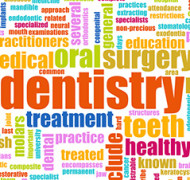
General Dentistry
Family Friendly Centre
Springwood Dental Centre has been providing Springwood and the Logan region with quality dental care for over 30 years. The architect-designed premises provide a home-like atmosphere with a lovely garden outlook. While we aim to keep your waiting to the absolute minimum, there is a wide range of up-to-date quality magazines that will suit all tastes.
Dentistry has changed so much in the recent years we cannot ignore advances in dental technology. At Springwood Dental Centre, we only undertake proven clinical treatments. We are not interested in fads – only in ensuring you receive optimum dental care to maintain your teeth for life and so give you dental advice and practical help.
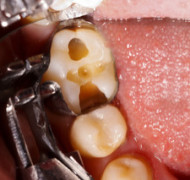
Root Canal Treatment
Springwood Dental Centre
A tooth infection can be very painful and serious infection requiring immediate treatment.
Sometimes when a tooth has deep decay or after deep and extensive fillings, the living tissue in the middle of the tooth (pulp tissue) becomes infected. Unless the tooth is badly broken down, it is best to save the tooth with root canal treatment (Endodontic Treatment). While this sounds like a daunting process, endodontic treatment, when performed in a gentle and considerate manner, is a good way to keep the tooth and avoid unnecessary extraction.
Under local anaesthesia, the infected pulp tissue is gently removed and the inner surfaces of the tooth cleaned and disinfected. Endodontic treatment usually takes two to three visits with and antibiotic or other dressing placed in the tooth between visits to ensure all the infection is healed. It is a great feeling to have the tooth pain-free and then the internal root canals of the tooth can be filled with a sterile filling material to seal off the canals and help prevent infection coming back.
After endodontic treatment is complete, the tooth needs to be rebuilt to ensure it is strong enough to chew with and also to provide another sealing layer to protect the root canal filling. All the evidence and research points towards a crown being the best option to fulfil these requirements but sometimes a large filling can be placed in the short term.
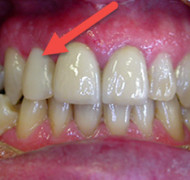
Dental Implants
Springwood Dental Centre
Dental implants are the closest modern dentistry has come to replacing your missing natural tooth. Dental implants look and feel like your own tooth.
What are dental implants? A dental implant is an artificial tooth root which is placed into the jawbone to act as a support for a natural-looking porcelain/ceramic crown. The end result is an artificial tooth which very closely mimics the appearance of a natural healthy tooth.
Constructed from titanium, dental implants are very biocompatible which allows your gums and jawbone to grow right up against the implant.
What benefits does this give to you? It means you can basically treat your dental implant just one of your own natural teeth. All normal foods can easily and safely be eaten and the implant can be kept clean using the normal toothbrushing and dental flossing techniques that you already use for your own teeth. And having a great looking artificial tooth too.

Porcelain Veneers
Springwood Dental Centre
Everyone likes to have a nice smile but sometimes your teeth can have problems which spoil this smile.
For a number of reasons, previous trauma, large fillings or genetic disturbances, teeth can be discoloured or stained which spoils the smile. In other circumstances, teeth can be a nice colour but be overlapped and rotated which makes for a crowded and crooked appearance. While orthodontic treatment is best option to improve severe crowding, minor crowding can sometimes be corrected quickly and easily by bonding tooth coloured material on the outside of the tooth.
These tooth veneers can be layered to mask and hide discoloured teeth as well as built up to make the tooth in line with adjacent teeth and make them look straighter.
Two materials are commonly used for tooth veneers. Composite resin is a popular filling material which can also be bonded to teeth as a veneer. Composite resin veneers are usually be placed in one visit so it is a case of ‘walk in’ with your stained or crooked tooth and ‘walk out’ with your new veneer placed. Often without having to numb the tooth with local anaesthetic! Good results can be obtained with this veneer technique but composite resin does need maintenance and periodic polishing if it stains. Also, being plastic, it sometimes chips if you bite too hard but the good news it is easily repaired.
The second material that can be used for tooth veneers is porcelain. This material provides a number of advantages over composite resin. It is stronger and more lifelike in appearance coming closest to mimicking the colour of teeth. Because porcelain are custom designed and laboratory-made, porcelain veneers have a higher cost than composite veneers. Also, even though porcelain is stronger than composite resin, it can be more difficult to repair on those rare occasions they chip or break.
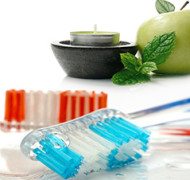
Teeth Whitening
That’s something to smile about
There are two types of tooth whitening available.
Everyone wants to have a nice smile. It doesn’t have to be ‘Hollywood perfect’, but should be attractive enough allow you to relax and join in when photos are taken at family celebrations. Undertaking a course of tooth whitening can dramatically improve the colour of the teeth creating a happy smile.
Sometimes, though, teeth can become yellow and stained and not good looking at all. There are several factors to consider when assessing teeth for tooth whitening. Diet and lifestyle factors play an important part in the colour of your teeth. If you drink a lot of tea, coffee or red wine, your teeth can develop superficial unsightly stains. Cigarette smoking is the greatest cause of stained teeth so stopping smoking will make your teeth look better as well as delivering a whole range of health benefits generally. Well worth doing!
So, the first step to improve the appearance and whiten the teeth is to have a thorough professional cleaning. Your teeth will also be examined closely for defects or decay. In particular, the quality of fillings in the front teeth will be assessed as fillings do not change colour with tooth whitening and so may need replacement after the teeth have been whitened.
In other situations, teeth can be discoloured internally from antibiotics, illnesses or other, sometimes unknown reasons. These so-called intrinsic stains are more difficult to manage and results of tooth whitening can be unpredictable.
Older teeth can become more yellow but this type of discolouration tends to improve best with tooth whitening. So there is no age limit to having whiter teeth.
There are two types of tooth whitening available. One is undertaken using strong lights and high concentration whitening gels in the surgery. Results here can be obtained quickly but the risk of tooth sensitivity increases and the cost is high. A second option we prefer here at Springwood Dental Centre is home bleaching. In this technique, a thin plastic tray is made to fit precisely over your teeth and we provide a whitening gel for you to use on a daily basis at home. Home bleaching is slower than the in-surgery option but end results are similar and the cost is much lower.
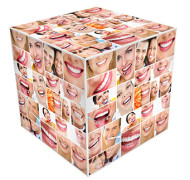
Crowns and Bridges
Easier than you think…
New tooth coloured dental fillings have a wide range of uses and can fix and restore many teeth in the mouth. Sometimes, though, there are problems with teeth which need more complex care. This is where crowns (“caps”) and bridges are required. A bridge is a series of crowns (usually 2) that are used to support a false tooth (pontic) replacing a missing tooth.
If a tooth has a large fracture or old filling, or is badly discloured or broken down, crowns and bridges provide a strong, long lasting and very attractive replacement for your tooth. Other situations where crowns and bridges are recommended is where there is a space from a missing tooth which needs to be replaced and after a tooth has had root canal treatment.
Porcelain and ceramics are the most common crown and bridge materials used today though gold is sometimes used in back teeth where it cannot be seen. Modern porcelain/ceramic materials mimic tooth appearance very closely and can be almost impossible to distinguish from the rest of your teeth.
A common question is how long do crowns last. The crowns and bridges themselves are made from very strong materials and rarely are any structural problems encountered. A common cause of failure, and one which is very hard to predict, is the strength and integrity of the supporting tooth. Like other teeth in the mouth, teeth that support crowns and bridges can develop decay or gum disease, may fracture or may become infected and require root canal treatment. These risk factors are closely assessed before a crown or bridge is constructed to try to minimise any problems.
The best way to ensure you enjoy a long life from your crown or bridge is to ensure it is kept very clean as part of your daily oral hygiene routine, avoid eating hard or sticky foods (e.g. ice, sticky or hard lollies/mints), and have regular dental examinations so that any problems can be detected and corrected early before significant damage occurs.
